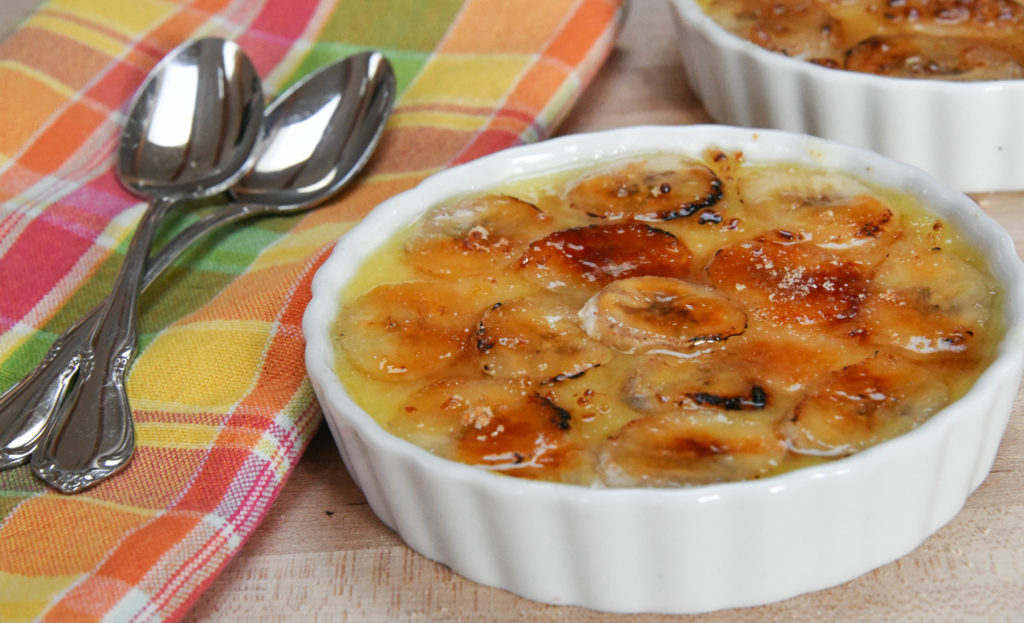
Crème brulée. It sounds so fancy, so complicated. Yet, its name means something so simple, “burned cream,” and sums up this custard perfectly. Crème brulée consists of cream, egg yolks and sugar. Dusted with a layer of sugar, the dessert is placed under a broiler or butane kitchen torch. Once the sugar caramelizes and forms a crisp, shiny, golden glaze, the dish transforms from boring, old custard into crunchy, velvety crème brulée.
Crème brulée, then and now
Historians differ on the exact origins of crème brulée. Some attribute it to 17th century France while others point to 15th century England. In the 19th century it became a favorite dessert at Trinity College, Cambridge, England. From there its popularity spread. It eventually fell out of fashion until the 1980s when upscale restaurants began serving it as a decadent final course.
This dessert has not lost its hold on diners’ palates. Stop by an ice cream or gelato shop or your local market’s ice cream case and you’ll likely see crème brulée as a featured flavor. The same holds true at chocolate and doughnut shops. You’ll likewise still find this dessert offered in countless restaurants.
A fruit-filled twist on this classic dessert
Although traditional crème brulée tastes divine, I sometimes crave a bit more complexity from this custard. That’s when I turn to one of my favorite fruits, the banana. I add a smidgen of banana extract to the custard. Then I spread a layer of thinly sliced banana over top and dust it with white or brown sugar. After that I fire up that kitchen torch and – voila!- I’ve made a heavenly caramelized banana crème brulée.
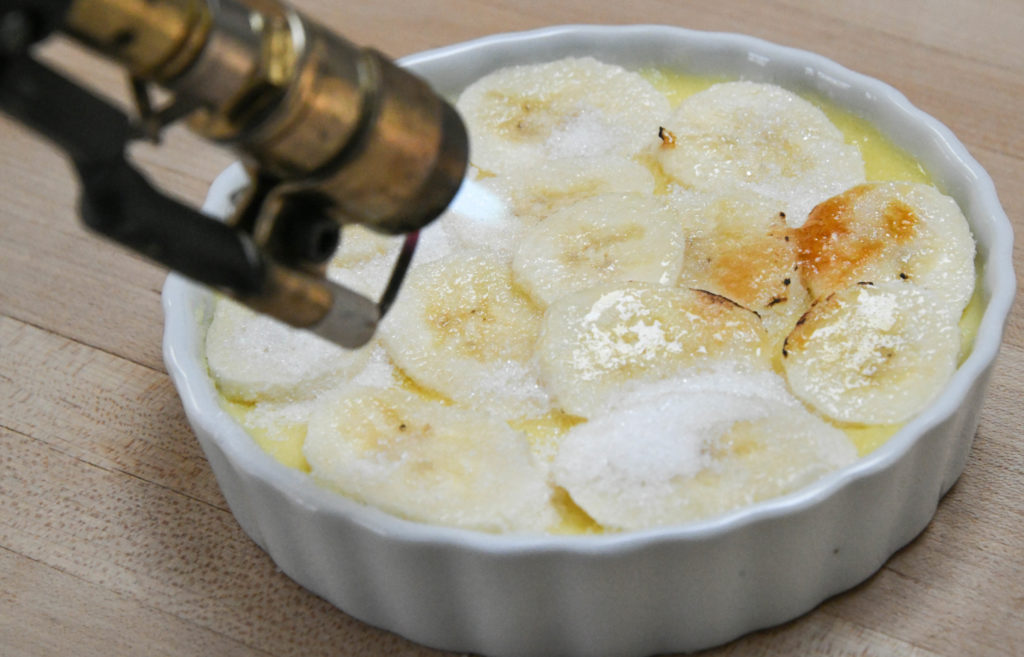
Caramelized Banana Crème Brulée
Makes 2 to 4
Ingredients
4 large egg yolks
1/2 cup granulated sugar
1 3/4 cup heavy cream
1 teaspoon banana extract
2 ripe bananas, thinly sliced
2 tablespoons white or brown sugar, plus more as needed
Directions
Using an electric mixer, slowly beat the sugar into the egg yolks. Beat for 2 to 3 minutes, until the mixture has thickened, has become pale yellow in color and forms a slowly dissolving ribbon when the beaters are lifted. (See image below) Do not beat beyond this point.
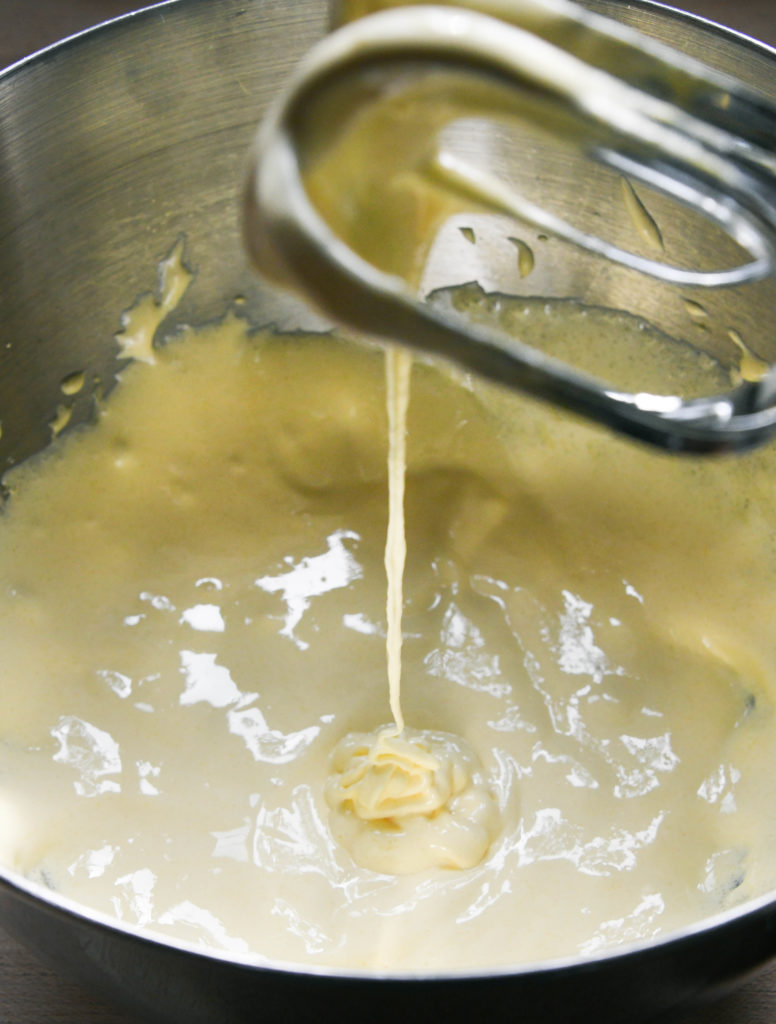
In a small saucepan bring the cream to a boil. Remove the pan from the heat. Add a few drops of hot cream to the egg mixture, whisk to combine and then repeat until the egg mixture begins to warm. Slowly beat in the remaining cream.
Pour the custard into a heavy-bottomed saucepan. Stirring constantly with a spatula or wooden spoon, cook the custard over medium heat for 6 to 10 minutes. When finished, the custard will coat the back of the spoon and read 165 degrees Fahrenheit on a candy/deep-fry or digital thermometer. Don’t cook it beyond this temperature or the custard will start to curdle.
Remove the pan from the heat.
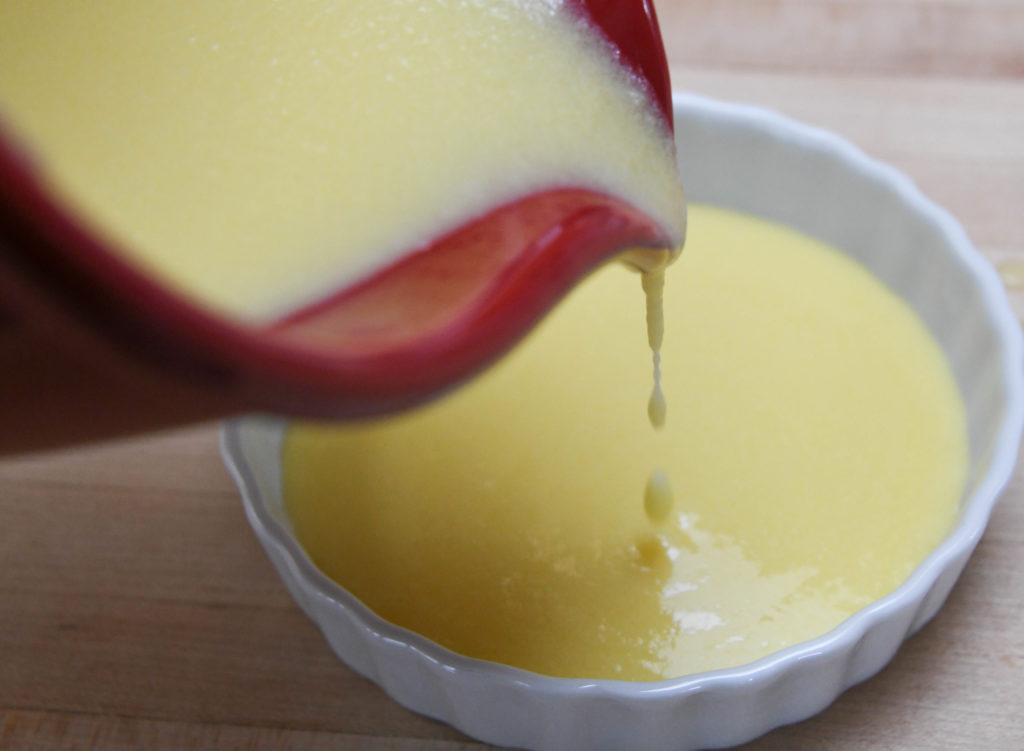
After placing a fine mesh strainer or chinois over a pitcher or bowl, pour the custard through the strainer. Once the custard has been strained, place even amounts of custard in 2 to 4 oven-safe ramekins. Smooth out the tops and cover each with plastic wrap. Refrigerate for a minimum of three hours.
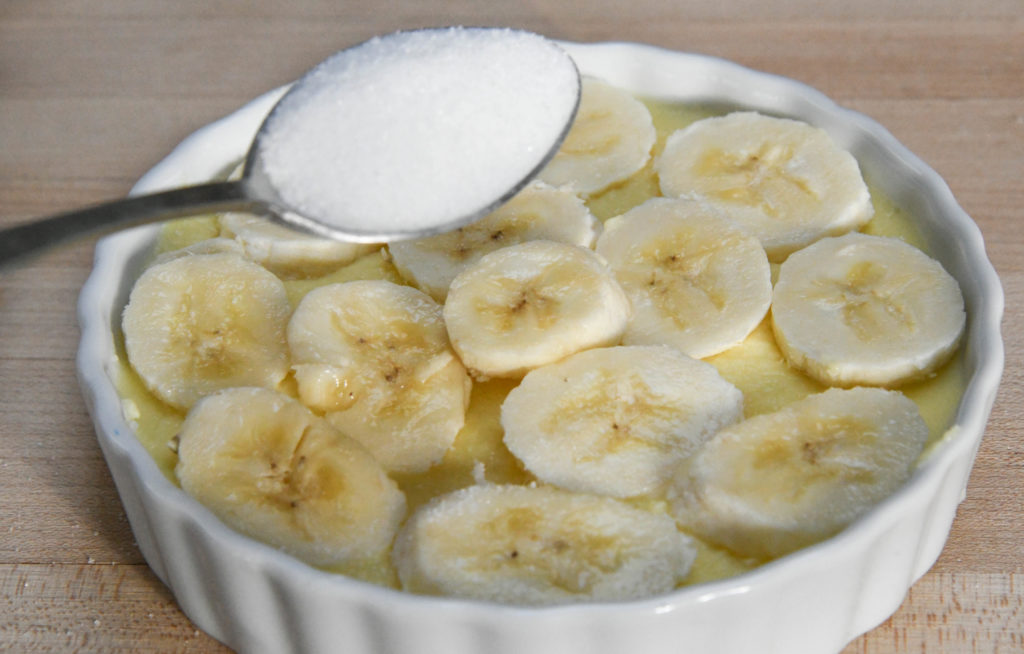
When you’re ready to serve them, remove the crème brulées from the refrigerator and discard the plastic wrap. Cover the top of each with a layer of thinly sliced banana. Sprinkle 1 to 2 teaspoons brown or white sugar over the bananas.
Holding a kitchen torch 2-inches above the crème brulée, slowly heat the sugar until it melts and begins to darken. Repeat with the remaining crème brulée(s). Serve immediately.